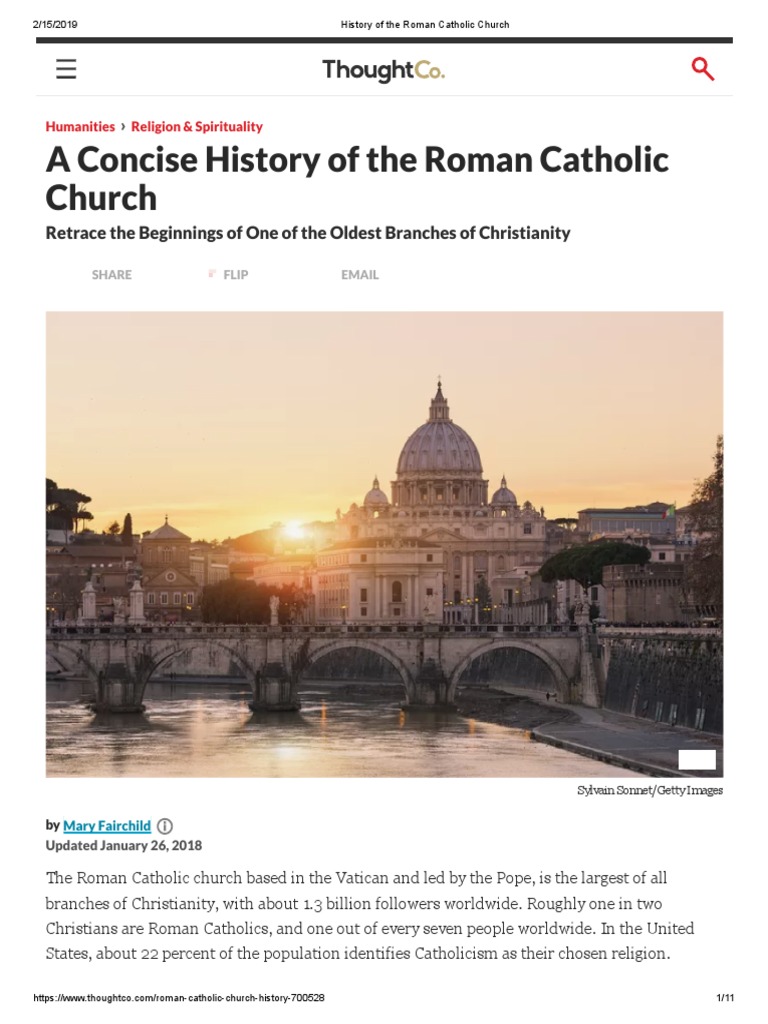The genesis of Roman Catholicism is steeped in rich historical narratives, intertwined with theological development and ecclesiastical evolution. To accurately delineate when Roman Catholicism started, one must traverse the annals of early Christianity, where the seeds of what would burgeon into a dominant religious institution were sown. The journey through this foundational period is not merely a chronology of events; it is an exploration of spiritual aspirations, doctrinal crystallization, and the significant figure of the Apostle Peter, considered by many as the first Pope.
The roots of Roman Catholicism can be traced back to the life and ministry of Jesus Christ around the early first century. The central tenet of Christianity, focusing on the life, death, and resurrection of Jesus, compels believers into a covenantal relationship with God, marking the inception of what would eventually become the Church. Following Christ’s resurrection, his apostles embarked on missionary endeavors, disseminating his teachings across the ancient Mediterranean milieu. This era, characterized by fervent evangelism, saw the nascent Christian community burgeon within the context of the Roman Empire, often facing persecution and martyrdom.
By the time of the Crucifixion, the ecclesiastical structure was rudimentary, yet it laid a robust foundation for future developments. The pivotal moment came with the events of Pentecost, traditionally understood as the birth of the Church, occurring approximately fifty days post-resurrection. It was here that the Holy Spirit descended upon the apostles, endowing them with the ability to speak in different tongues and empowering them to spread the Gospel. This divine intervention catalyzed the formation of a cohesive body of believers, characterized by communal worship, prayer, and the breaking of bread.
As the apostles spread throughout various regions, distinct communities emerged, characterized by varying interpretations and practices of faith. Notable among these early gatherings was the community in Rome, which, although one of many, began to distinguish itself as a burgeoning center for Christian thought and governance. This prominence can be partially attributed to the martyrdom of Peter and Paul in Rome, an event that wouldue imbue the Roman Church with a sense of apostolic authority.
Throughout the next few centuries, the Church faced both external and internal challenges. The external pressures from Roman authoritarianism through sporadic persecutions aimed to obliterate this emergent faith. Figures such as Emperor Nero became infamous for their brutal treatment of Christians, which paradoxically fortified the resolve and coherence of the Church. In 313 AD, however, the Edict of Milan, promulgated by Emperor Constantine, heralded a transformative era by granting religious freedom and deeming Christianity as a legitimate faith within the empire.
The Council of Nicaea in 325 AD marked another watershed moment, as it concretized essential doctrinal tenets through the Nicene Creed, delineating orthodoxy amid various theological disputes. This articulation of faith also provided a blueprint that would influence subsequent ecclesiastical governance. It is crucial to underscore here that the Council did not birth Roman Catholicism; rather, it highlighted and solidified already burgeoning elements that would define the Catholic tradition, particularly concerning the divinity of Christ and the nature of the Trinity.
In the centuries that ensued, the Roman Church gradually consolidated its authority over Christian doctrine and practice. The influence of the papacy waxed significantly, evolving from the foundational leadership modeled by Peter to an institution wielding unparalleled spiritual authority. The Latin phrase “Petrus apud Romam” (“Peter at Rome”) became emblematic of the pastoral and theological lineage claimed by successive popes. This lineage not only conferred legitimacy but also emanated a sense of unity among believers dispersed across varying regions.
As one delves deeper into the fabric of early Christian history, it is pivotal to comprehend the role that sacraments, rituals, and ecclesiastical hierarchy played in establishing Roman Catholicism’s distinct identity. Baptism and the Eucharist emerged as central sacraments, symbolizing not just individual faith but communal belonging. Additionally, the development of the liturgical calendar reified the significance of celebratory observances, marking sacred time and grounding believers in the continuity of faith.
Yet, the pursuit of unity was often marred by schisms and doctrinal controversies. The Great Schism of 1054, while often cast as a division between Eastern Orthodoxy and Roman Catholicism, must be viewed within the broader narrative of a Church striving for coherence amidst diverse cultural expressions of faith. It illustrates which tenets of Christianity were held sacrosanct and how varying interpretations could lead to profound ecclesiastical rifts.
As we ponder the historical lineage of Roman Catholicism, consider the implications of its origins. It invites introspection on how foundational beliefs have shaped Christian practice and the broader societal landscape. This journey through the early church compels us to evaluate not only the distinctiveness of Catholicism but the universal aspiration shared amongst Christians to seek communion and understanding in faith.
In conclusion, while Roman Catholicism, in its recognizable form, began to crystallize over the centuries, its roots are embedded in the very life of Christ and the burgeoning Christian community in the first century. This historical tapestry weaves together the spiritual aspirations, communal manifestations, and theological developments that have occurred over millennia. Understanding this lineage not only enriches the comprehension of Catholicism today but also stirs curiosity, inviting future exploration into the entirety of Christian history.



